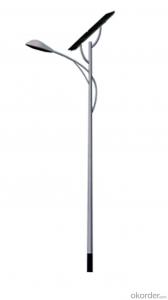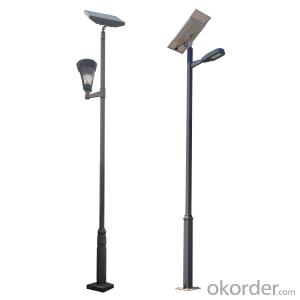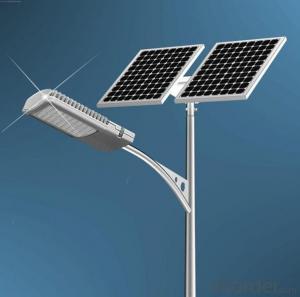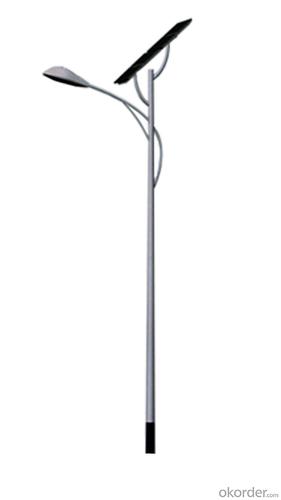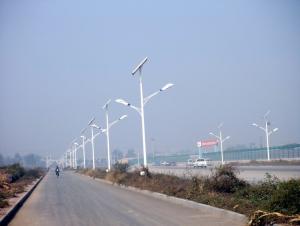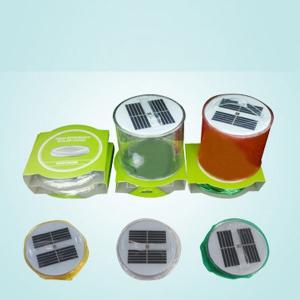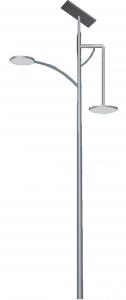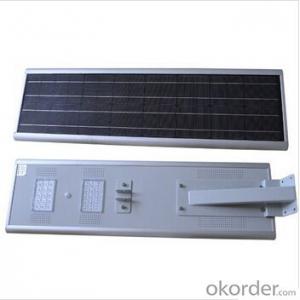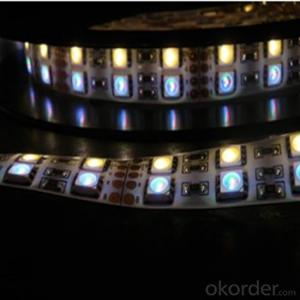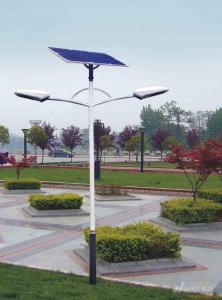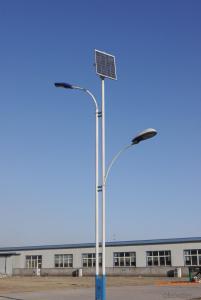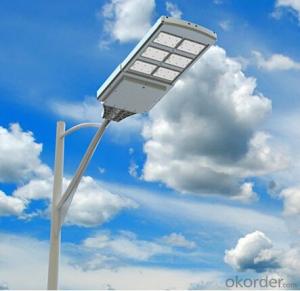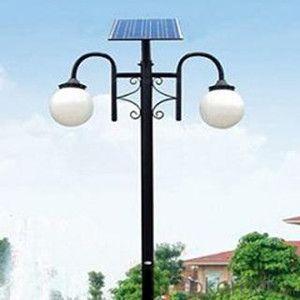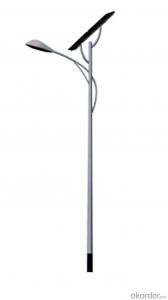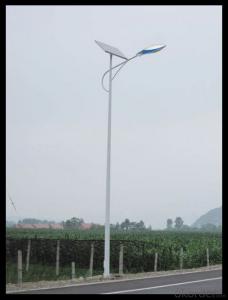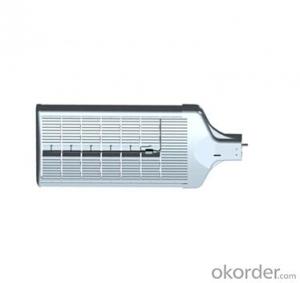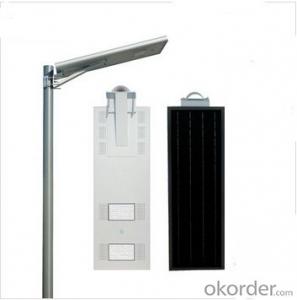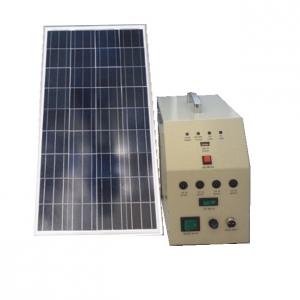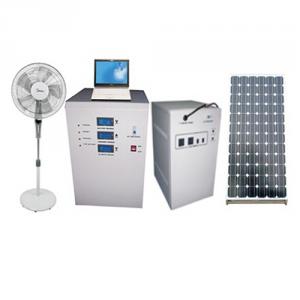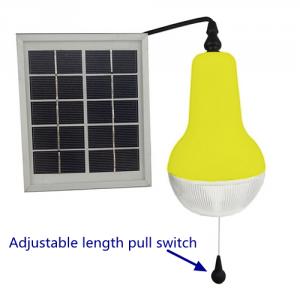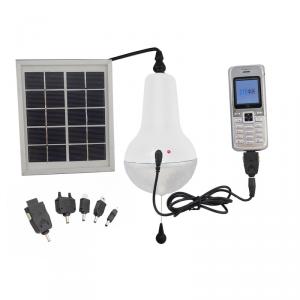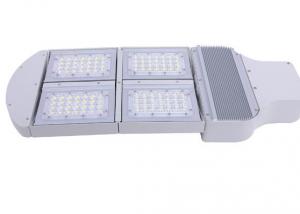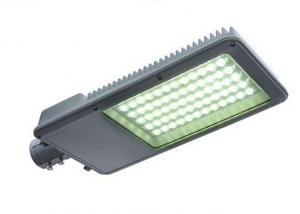Solar Light Outdoor Post - New Energy Good Looking Solar Street Light 001
- Loading Port:
- Ningbo
- Payment Terms:
- TT or LC
- Min Order Qty:
- 1 set
- Supply Capability:
- 5000 set/month
OKorder Service Pledge
OKorder Financial Service
You Might Also Like
1, Product desciption
Inverter circuits designed to produce a variable output voltage range are often used within motor speed controllers.
The DC power for the inverter section can be derived from a normal AC wall outlet or some other source. Control and feedback circuitry is used to adjust the final output of the inverter section which will ultimately determine the speed of the motor operating under its mechanical load.
Motor speed control needs are numerous and include things like: industrial motor driven equipment, electric vehicles, rail transport systems, and power tools. (See related: variable-frequency drive ) Switching states are developed for positive, negative and zero voltages as per the patterns given in the switching Table.
The generated gate pulses are given to each switch in accordance with the developed pattern and thus the output is obtained.
Solar power is energy from the sun. "Solar" is the Latin word for "sun" and
And Powerful source of energy. Without it, there will be no life.
Solar energy is considered as a serious source of energy for many years
of the vast amounts of energy that is made freely available, if harnessed by modern technology.
A magnifying glass can be used to heat up a small amount of water.
The short piece of copper tube is sealed at one end and filled with water.
And magnifying glass is then used to warm up the pipe.
Using more than one magnifying glass will increase the temperature more rapidly.
2, Features of the product
Inverters convert low frequency main AC power to higher frequency for use in induction heating.
To do this, AC power is first rectified to provide DC power. The inverter then changes the DC power to high frequency AC power. Due to the reduction in the number of DC Sources employed, the structure becomes more reliable and the output voltage has higher resolution due to an increase in the number of steps so that the reference sinusoidal voltage can be better achieved.
This configuration has recently become very popular in AC power supply and adjustable speed drive applications. This new inverter can avoid extra clamping diodes or voltage balancing capacitors. There are three kinds of level shifted modulation techniques, namely:
The first thing to figure out is the length of road in need of street lights.
This can be a small entrance road only a couple hundred of feet long to miles of streets through an area. Does the area currently have any type of lighting available.
What is the reason for needing street lights in this area
Is the electrical grid already nearby or would you need to call in the power company to bring in electrical lines.
If the electric needs to be brought to the area, how much is this going to cost? Depending on how far the grid electric is from the location of the needed lighting, this can be quite expensive.
How much lighting is needed on the street? Do the lights need to be dark sky compliant.
Do the street lights need to run from dusk to dawn or for only a specified number of hours at night.
Are the street lights able to dim in the middle of the night and still provide enough lighting.
These questions need to be answered before you can decide on how many lights you will need to complete the project.
3, Detailed Specification
| ||||||||||||||||||||||||||||||||||||||||||||||||
4, Product Image
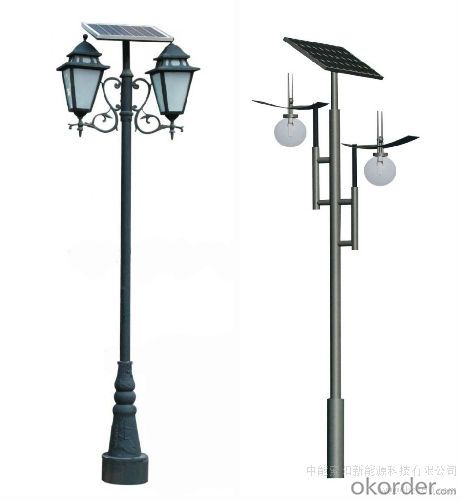
- Q: How do solar lights handle extreme temperatures?
- Solar lights are designed to handle extreme temperatures and are built to withstand both hot and cold climates. The main components of solar lights, such as the solar panel, battery, and LED lights, are made using high-quality materials that are able to function effectively in a wide range of temperatures. In hot temperatures, solar lights are designed to dissipate heat efficiently to prevent any damage to the internal components. This is typically achieved through the use of heat sinks or cooling mechanisms that help to regulate the temperature. Additionally, solar panels are often coated with materials that can withstand high temperatures without warping or degrading. Similarly, in cold temperatures, solar lights are designed to continue functioning effectively. The batteries used in solar lights are typically rechargeable and built to handle low temperatures. This ensures that the lights can still store and provide power even in freezing conditions. Additionally, the LED lights used in solar lights are also capable of operating in cold temperatures without any decrease in performance. It is worth noting that extreme temperatures, whether extremely hot or cold, can affect the overall performance and efficiency of solar lights. In very hot temperatures, the battery life may be slightly reduced, and in extremely cold temperatures, the solar panel's efficiency may slightly decrease. However, solar lights are generally built to handle these variations and continue to provide reliable lighting despite the weather conditions. Overall, solar lights are designed to handle extreme temperatures and are a durable and reliable lighting solution for various climates.
- Q: Are solar lights suitable for public parks?
- Yes, solar lights are suitable for public parks. They are a sustainable and cost-effective lighting solution that can provide illumination in parks without the need for electrical connections. Solar lights can enhance safety and security, promote a green environment, and contribute to the overall aesthetic appeal of public parks.
- Q: Can solar lights be used for agricultural or farming purposes?
- Solar lights have the capability to be utilized in agricultural and farming tasks. When it comes to illuminating areas like fields, barns, and livestock shelters, solar lights prove to be a sustainable and cost-effective solution. They can effectively provide lighting for a variety of farming activities, such as planting, harvesting, and tending to livestock. By using solar panels, solar lights are able to convert sunlight into electricity, which can then be stored in rechargeable batteries. This eliminates the need for an external power source, making solar lights particularly suitable for remote areas or locations without access to electricity. Their installation is straightforward and they require minimal maintenance, thereby reducing the inconvenience and expenses associated with traditional lighting systems. Apart from providing illumination, solar lights can deliver additional benefits for agriculture. For instance, certain solar lights are equipped with motion sensors that can detect movement and discourage pests from entering farming areas. This effectively safeguards crops and livestock from potential harm. Additionally, solar lights play a role in decreasing carbon emissions and promoting sustainability within agriculture. Through harnessing the renewable energy of the sun, farmers can reduce their dependence on fossil fuels and contribute to a more environmentally friendly farming practice that is greener overall. In summary, solar lights are a versatile and pragmatic choice for agricultural and farming purposes. They offer reliable and efficient lighting solutions, while also delivering numerous environmental advantages.
- Q: Are solar lights resistant to pests or insects?
- Pests and insects are generally kept at bay by solar lights. The primary reason for this lies in their lack of chemical emissions or attractants that would draw in such nuisances. Moreover, their reliance on solar energy means they do not generate any heat or warmth that might entice bugs. Additionally, most solar lights are equipped with a protective casing or cover that prevents insects from infiltrating and causing disruption to the internal components. Nevertheless, it is worth noting that while solar lights may possess resistance to pests and insects, they are not entirely impervious. In rare instances, insects may still manage to infiltrate the light, but such occurrences are infrequent and can typically be avoided through proper installation and maintenance. All in all, solar lights offer a dependable and efficient outdoor lighting choice that effectively repels pests and insects.
- Q: Can solar lights be used for agricultural or farming purposes?
- Yes, solar lights can be used for agricultural or farming purposes. Solar lights are a sustainable and cost-effective solution for illuminating agricultural areas such as fields, barns, and livestock shelters. They can be used to provide lighting for various farming activities such as planting, harvesting, and taking care of livestock. Solar lights are powered by solar panels that convert sunlight into electricity, which is then stored in rechargeable batteries. This means that they do not require an external power source, making them ideal for remote areas or locations without access to electricity. Solar lights can be easily installed and require minimal maintenance, reducing the hassle and expenses associated with traditional lighting systems. In addition to providing illumination, solar lights can also have other benefits for agriculture. For example, some solar lights come with motion sensors that can detect movement and deter pests from entering the farming areas. This can help protect crops and livestock from potential damage. Furthermore, solar lights contribute to reducing carbon emissions and promote sustainability in agriculture. By harnessing the renewable energy of the sun, farmers can reduce their reliance on fossil fuels and contribute to a greener and more environmentally friendly farming practice. Overall, solar lights are a versatile and practical option for agricultural and farming purposes. They offer reliable and efficient lighting solutions, while also providing numerous environmental benefits.
- Q: Do solar lights emit a bright light?
- The brightness of solar lights can differ based on the particular model and the quality of the solar panel and LED bulb employed, even though they typically emit a bright light. Superior solar lights are specifically crafted to offer ample illumination for different outdoor purposes like pathways, gardens, and security lighting. Nevertheless, it is worth mentioning that solar lights might not be as luminous as conventional electric lights, especially when sunlight is scarce or in heavily shaded areas.
- Q: Can solar lights be used to light up pathways and driveways?
- Pathways and driveways can be illuminated using solar lights. These lights are designed to capture solar energy and convert it into electricity, which powers the lights. They typically have solar panels that absorb sunlight during the day and store the energy in rechargeable batteries. When the sun sets, the lights automatically turn on, providing illumination for pathways and driveways. Solar lights are a popular and cost-effective choice for outdoor lighting because they don't require any wiring or electricity from the main grid. This makes them easy to install and environmentally friendly. Moreover, solar lights come in various styles and brightness levels, allowing you to select the perfect option for your pathway or driveway lighting requirements.
- Q: Are solar lights easy to install?
- Yes, solar lights are typically easy to install as they do not require any wiring or electrical connections. Most solar lights come with stakes or mounting brackets, allowing users to easily place them in desired areas without any complicated installation processes.
- Q: How do solar lights handle electromagnetic interference?
- Solar lights are designed to handle electromagnetic interference by incorporating shielding materials and filters to reduce the impact of electromagnetic waves on the internal components. This helps to maintain their functionality and prevent any disruptions caused by nearby electronic devices or power lines.
- Q: How do solar lights handle electromagnetic interference or radio frequencies?
- Solar lights are generally not affected by electromagnetic interference or radio frequencies. This is because solar lights do not rely on any electronic components that are susceptible to interference. Solar lights work by converting sunlight into electrical energy through photovoltaic cells, which is then stored in a battery for later use. The generated electricity is used to power the LED lights in the solar light. Since solar lights do not have any complex electronic circuitry or antennas, they are not prone to electromagnetic interference or radio frequency interference. Therefore, solar lights are not affected by external sources of electromagnetic radiation or radio frequencies, allowing them to operate reliably in various environments without any interference issues.
Send your message to us
Solar Light Outdoor Post - New Energy Good Looking Solar Street Light 001
- Loading Port:
- Ningbo
- Payment Terms:
- TT or LC
- Min Order Qty:
- 1 set
- Supply Capability:
- 5000 set/month
OKorder Service Pledge
OKorder Financial Service
Similar products
Hot products
Hot Searches
Related keywords
